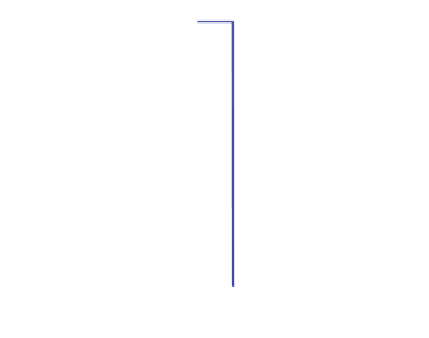Information Technology Reference
In-Depth Information
4
3
2
1
0
−1
−2
−3
−4
−4
−3
−2
−1
0
1
2
3
4
µ
driver
[eA]
Fig. 5.
The single-molecule response of the diallyl butane molecule to a point charge
driver.
All these HOMO configurations differ for the dipole moment generated in the
molecule from the charge localization: a positive moment in Fig.
4
(D), a nega-
tive one in Fig.
4
(E). Such a quantitative parameter, evaluated multiplying the
electron positive charge and its distance from the center of the molecule, offers
a way to analyze the molecular response when a change in the Coulomb field
produced by neighboring molecules occurs. A QCA molecule is indeed expected
to respond in non-linear way to the external perturbations, switching from one
state to another as demonstrated in [
7
]. This nonlinear behavior is shown in Fig.
5
where the dipole moment of the molecule is shown as a function of the external
dipole moment, considered as input of the system. The dipole of the molecule
has opposite sign with respect to the driver dipole moment; thus the molecule
interacts properly with the neighboring molecules assuming the opposite state.
The diallyl butane molecule constitutes only a half QCA cell; a whole QCA
device can be obtained aligning two molecules along the axis thus forming a
squared structure. Although very performing as a QCA device for its good charge
confinement and non-linear molecular response, the diallyl butane is not suit-
able for real application. It lacks the possibility of encoding a NULL state for
clock issues and has no binding element to be placed on a substrate following a
specific layout. Other molecules should be devised which could overcome these
limitations.
The decatriene [
11
] is one possible candidate to overcome the deficiencies
of diallyl butane: its molecule presents three dots (a sketch of its structure is
reported in Fig.
6
). Each dot is an ethylene groups (the circle) and equivalently
to the diallyl butane, no element is unfortunately able to allow attachment of
the molecules on a surface.
The redox centers of the decatriene confine charge in the molecule
according to three configurations (schematically reproduced at the bottom of
Fig.
6
): a simple correspondence can, then, be established among these charge














































Search WWH ::

Custom Search